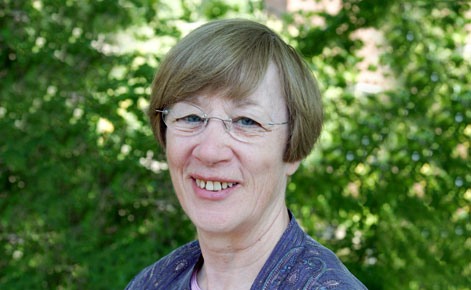 Almost 20 years ago, Courtney* was an elementary teacher challenged to improve as part of a Professional Development School partnering with Michigan State University. She started enthusiastic, thoughtful and open to what she could learn from university and school colleagues.
Almost 20 years ago, Courtney* was an elementary teacher challenged to improve as part of a Professional Development School partnering with Michigan State University. She started enthusiastic, thoughtful and open to what she could learn from university and school colleagues.
Nevertheless, for various reasons, her efforts kept faltering, leaving her frustrated and discouraged.
Sharon Schwille, a doctoral student at the time, took notice and decided to make Courtney the focus of her dissertation, a rare single-person case study. It is a story of setbacks and small but significant triumphs that, after seven long years, resulted in transformation of her classroom, with new ways of teaching and students taking more responsibility for their own learning.
Now Courtney’s tale is told in a new book, “Never Give Up: An Experienced Teacher Overcomes Obstacles to Change,” from Information Age Publishing.
“Like the title says, she just never gave up,” said Schwille, former director of teacher preparation in the College of Education. Sadly, Courtney died unexpectedly not long after the dissertation was completed, halting the pair’s plan to write a book together. But Schwille didn’t give up either. She began work on the book after retiring from MSU.
With 1,500 pages of journals kept by the teacher and other data, she could tell a story not only in scholarly depth, but with the human interest and suspense of a novel.
The book also has a deeper meaning. As the description states, it “is a look at how innovative reform movements and well-meaning professional development efforts fall short of bringing about deep-seated change in teaching methods. It raises weighty questions such as how teacher preparation programs should begin the process of instilling habits of exploration, experimentation, research and learning in their pre-service teachers so that they continuously work at updating and upgrading their teaching practices.”
“In short,” Schwille says, “to me the main lesson is to show what happens when a teacher has a really hard time finding the time and support needed to make the changes that would actually make a fundamental difference in kids’ learning.”
 Courtney did have unusual resources in place, such as mentoring from colleagues and stimulating study groups, as well as a reflective disposition, but still her implementation fell flat in the classroom. Why?
Courtney did have unusual resources in place, such as mentoring from colleagues and stimulating study groups, as well as a reflective disposition, but still her implementation fell flat in the classroom. Why?
Unavoidably, it takes time, Schwille says—hopefully not seven years, but definitely more than a few months and a workshop here and there. Courtney had multiple struggles and in-depth experiences from which to learn new practices and stretch her abilities. To succeed, she also had to come up with a ceaseless probing of self, a lot of flexibility and above all, great persistence.
“Her story shows what is possible when time and time again the temptation to give up is rejected,” Schwille writes. “This book will give courage to teachers who want to change as well as inspiration to those who are willing to support these changes.”
At the end of the book, Schwille includes a study guide with questions that can be used as a tool in graduate-level courses or for discussion among groups of educators and policymakers.
* Pseudonyms have been used to protect the identity of research subjects.




